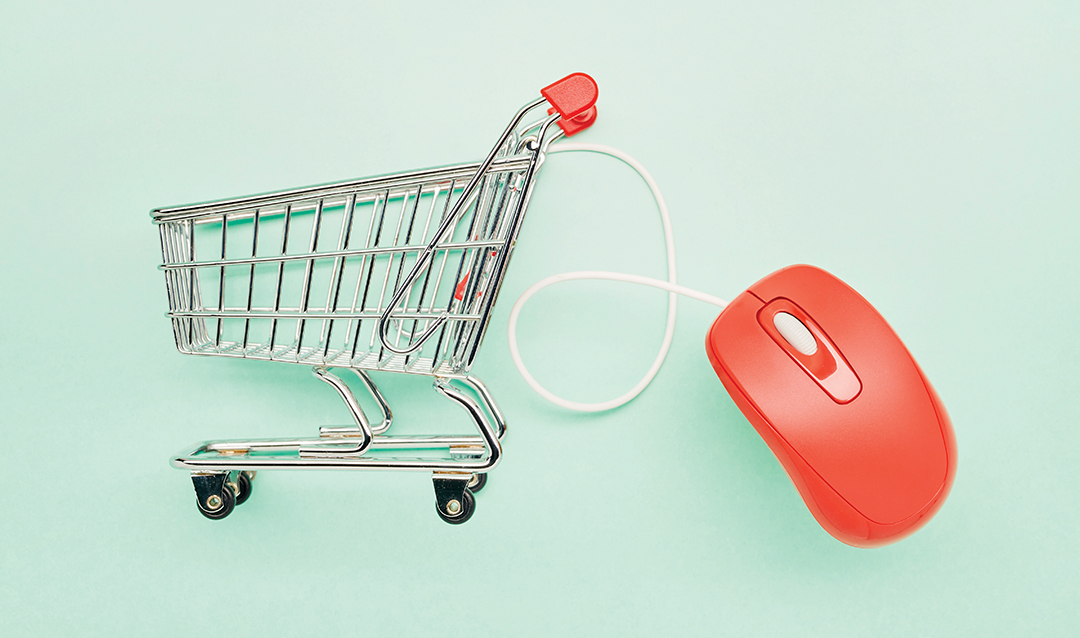The COVID-19 pandemic has had a dramatic effect on food shopping in the U.S. and around the world. The shutdown of many restaurants meant people had to eat at home; at the same time, lockdown orders made it difficult to get to grocery stores. Many people decided to limit their exposure and turned to online services such as Instacart or Whole Foods to put food on the table.
As Chad Meyerhoefer, professor in the economics department at Lehigh, points out in a new research paper (“COVID-19 and the Demand for Online Food Shopping Services: Empirical Evidence from Taiwan”), online grocery sales in the U.S. are expected to grow 40% in 2020.
Meyerhoefer and his colleague, Hung-Hao Chang from the department of agricultural economics at National Taiwan University, wanted to learn more about the dynamics behind this change in consumer behavior. They studied the largest online food shopping provider in Taiwan, a service known as Ubox. The nonprofit corporation had been set up with the help of the national government well before the pandemic to help small farmers sell their goods directly to consumers (something the U.S. Department of Agriculture has tried to accomplish through the Farmers Market Promotion Program), says Meyerhoefer.
Not surprisingly, the use of Ubox increased dramatically in Taiwan as the pandemic took hold. In the early stages of the outbreak, as news of COVID-19 cases hit the media, Ubox sales went up 18% per week; the number of customers grew by 16%.
Meyerhoefer and his colleague found that every confirmed case of COVID-19 led to a 5.7% increase in sales on Ubox. They also found that a 1% increase in newspaper mentions of the pandemic correlated with a 3.8% increase in Ubox sales.
Meyerhoefer points out that the rise in Ubox use is tapering off; overall, he predicts about a 1.5% increase in Ubox sales for every COVID case.
The increase in sales varied across different types of food. For example, storable items such as grains enjoyed a big increase, but so did fresh fruits and vegetables. Meyerhoefer suspects this may have been due to fresh foods in Taiwan tending to be bought at open air markets, which might seem less safe during a pandemic.
Findings from Taiwan may not necessarily be applicable to the U.S. For one thing, says Meyerhoefer, “When it comes to the pandemic response, I don’t think Taiwanese society is as polarized as the U.S. There is more of a collective orientation, as opposed to the American emphasis on individualism. In Taiwan, there’s social pressure to wear a mask in public. After all, they’ve been through several virus scares in the recent past. In the U.S., this is the first widespread outbreak in recent memory.”
Nevertheless, Meyerhoefer believes the findings point to the possibility that online food shopping platforms will remain popular even after the pandemic eases. Unlike the U.S., Taiwan did not impose shutdowns or mobility restrictions, yet shoppers moved to the online platforms as a safety precaution. Even as the pandemic continues, Americans may also prefer to grocery shop from home. According to Meyerhoefer, online food shopping is one way to protect the elderly, those with chronic conditions, and other vulnerable members of society from the virus. He points out that limiting social interactions in the retail food sector could help slow the spread of the virus.
Meyerhoefer cites another finding from the study: Small farmers benefited from the direct-to-consumer link provided by Ubox. This suggests that such platforms might help protect small farmers during a pandemic, or at other times when their incomes are disrupted by sudden, unexpected shifts in demand, he says. According to a recent article in Forbes, small farms in the U.S. that sell directly to consumers are also thriving during the pandemic.
Furthermore, he says, “As people become more aware of how easily they can get sick from other people, it reinforces the desire to shop online, which could lead to a realignment for the food industry. Online grocery shopping is a small percentage of the total market right now, but the pandemic has given it a big push.
“Eventually, when this pandemic fades, we may not need the same online shopping capacity. Private industry could be reluctant to invest in the sector if consumers revert to shopping in person. But we’ll need that infrastructure for the next pandemic, so policy makers may want to think about incentivizing the development of online food delivery platforms.”
Why it Matters: Not only can online food shopping platforms help promote local agriculture, they also play an important role in protecting population health during pandemics.
Story by Margie Smith Holt





